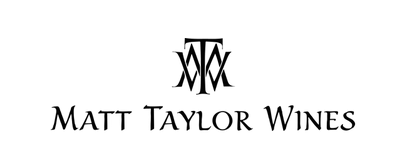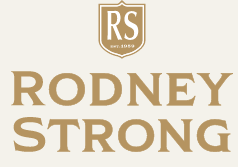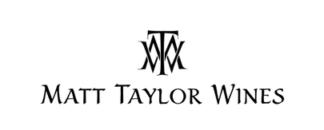Description
About Our Project

Why Occidental, CA?
 where so many miniscule climatic details make vast differences in the potential quality of fruit. The proximity to the Pacific Ocean (Komorebi Vineyard is just 4.5mi), the constant fog and humidity which envelop us throughout the growing season, the Sequoias that surround us and their effect on air and quality of light, and the extremely long season from budbreak to harvest of 200+ days are some examples of this. These difficult conditions stress the grapevines in a way that intensifies tension, preserves acidity, and allows for incredible skin maturity and therefore the potential for structural and textural components like no other.
where so many miniscule climatic details make vast differences in the potential quality of fruit. The proximity to the Pacific Ocean (Komorebi Vineyard is just 4.5mi), the constant fog and humidity which envelop us throughout the growing season, the Sequoias that surround us and their effect on air and quality of light, and the extremely long season from budbreak to harvest of 200+ days are some examples of this. These difficult conditions stress the grapevines in a way that intensifies tension, preserves acidity, and allows for incredible skin maturity and therefore the potential for structural and textural components like no other.Why Matt Taylor Wines?
As a name or as a project? As a name it was something I tried to avoid like Covid. It is not who I am or what I want the focus to be on, yet after running into so many trademark hurdles with all the “glorious” names I wanted to use and with other uses of “Taylor” in the name, this was the one avenue which skipped over discussion of the name and jumped directly into discussing the wine/project. That was alluring and enticing for sure. The primary reason behind starting this project and planting the Komorebi Vineyard was to demonstrate, without outside influences, what I envisioned as the epitome or ideal (see notes on vineyard & winemaking below) of what could be achieved in California grape growing and winemaking as it pertained to Pinot Noir & Chardonnay in California.
Why Komorebi Vineyard?

As a site because it is some of the best terroir in California in my mind. We planted it to high density (3600 vines per acre vs the typical 1800 vines per acrein most California Vineyards) in 2011 to 420a rootstock (a cross of Riparia & Berlandieri) and waited to graft until 2014 to allow the rootstock to find deeper ground and begin our process toward dry-farming. We grafted via seleccion massale (from local selections, NOT clones, which were of extreme pedigree and yet low availability) and from day 1 we have farmed this site organically, biodynamically and with a compass toward regeneratively (since 2016). We did this because we recognize that higher density, organically, biodynamically and dry-farmed vines yield incredible skin and seed maturity which, when one is producing wines to encapsulate structure and tension with limited to no sulfur and elevated acid levels, this is paramount in doing so.
As a name, well it was suggested by a friend as a name for the project. It is a Japanese word that translates “sunlight filtered through the leaves of trees”. If you are familiar with this area and with the dense sequoia and pine forests, you know that there is a quality of light in this area like no other. It radiates and permeates everything in this area and it was known from day 1 that this word, this term, this poetic nod to nature would become associated with this project.
Why 100% Whole Cluster Pinot Noir?

Obviously because I feel that Pinot Noir done well with whole cluster is the greatest expression of this grape achievable. You will begin to understand when working with me that nothing is done dogmatically. We always go in with a plan, knowing that the plan will change each vintage and each day. But understand that the reason we farm in this area and the way we do is by choice. When one does whole cluster fermentation, especially 100% as we do, there will be a pH increase in our area of around 0.2-0.4 (say a change of 3.3-3.7) from harvest to completion of malolactic fermentation depending on the vintage. Therefore, if one is making wines by NOT acidulating (addition of tartaric acid during or after fermentation to boost the acid profile) and wanting to age extended periods (≤22 months) with minimal to no sulfur, then 2 things are integral; one of them being your pH for microbial stability and therefore a need to have starting material ideally under 3.3pH (finished pH ideally ≤3.7), and the other being lees (our little specks of gold with regards to anti-oxidants and textural/structural aid). Again, we chose this location and how we farm because of our desire to not only get to full maturity (this is another discussion for another time) with elevated acid profiles, but with “skin-maturity”. I repeat this because it encapsulates so much for me. I reference my point earlier of how long our growing season is. Because of this time in cool conditions, the skins at harvest are at a point of being almost dissolvable (not quite, but close enough for a mental image). This is paramount for our style of wine. So many whole cluster fermentations don’t see a breakdown of the berry (just look at the Instagram photos of those wines being dug out for pressing) and therefore see a large percentage of carbonic maceration (reference Wikipedia for the definition of this) of both complexity of aromatics in both the red spectrum and spice spectrum and an added component of structure interlaced with that because of the whole cluster. I like these wines and don’t disagree with them, but please understand we are consciously doing something different. Having skins that breakdown so easily means that I can proceed with 100% whole cluster knowing that the skins and berries will break down completely in the fermenter and yield everything they have phenolically (the structural components if you will). Because of this I can build these wines up structurally in a way that most avoid with Pinot Noir. We then proceed to do extended maceration so that we can coax out of the seeds, again matured and well lignified (turned brown), the important structural and bitter components that the skins don’t lend. And because of the skins essentially dissolving in the fermenter, we see a large percentage of quality lees in them that are essential to the élevage (ageing) and what helps preserve and form these wines in barrel. So, in essence, this site allows for us to do 100% whole cluster for the style and method we wish to do it in, and therefore we do so enthusiastically.
Why No Sulfur (on the Chardonnay)?

This may be best defined as “my lunch with Richard Leroy”. As I noted before, nothing we do is dogmatic. If any wine needs sulfur or acid or even sugar to make it have the best fighting chance to be its greatest in the long term, then I will prescribe to that but will hopefully learn how to not have it happen again. So much of what we do in the vineyard is creating the medium that we can mold, unaltered, into an expression of place via the cellar. I never set out to make a wine without sulfur. But the first Chardonnay from the Komorebi Vineyard was an anomaly to most wines I’ve made in the past. You see, we do “bench trials” quite often where we take a wine and put it into a glass, maybe 1/3-1/2 full and cover it with a watch glass. We then smell and taste the wine daily over the course of 10-14 days usually, sometimes more. The idea behind this is to see how quickly the wine breaks down to oxygen and thereby getting a glimpse into the future stability of that wine and what steps we take to aid it (sulfuring, changing the type of material it is in (oak, concrete, stainless steel, clay), stirring its lees, etc). Many factors weigh into the time it takes the wine to break down (has it been sulfured, what is the pH? what is the alcohol? Is it 6 months old? is it 18 months old?, etc) If most of our red wines we make begin to break down after 5-10 days, and most whites after 7-12 days, the Komorebi Chardonnay was staying bulletproof for over 3 weeks consistently. I had never had a wine like this. Was it confirmation of what and how we were farming and making wine? Regardless, it had me questioning whether sulfur was in fact needed for it based on its stability. I took the wine with me on a trip to the Loire Valley with Pascaline Lepeltier and we were tasting with Richard Leroy (arguably the greatest Chenin Blanc producer in the world) at his property and the topic came up. He could see I was intrigued and perplexed and confounded all at the same time. I had to know more for my own curiosity. Richard invited me back over for lunch the next day for what would be one of many life-changing discussions with him over lunch. When we sat down that day, Richard pulled out many examples of wines he had made both with and without sulfur, often times the same vintage for educational purposes, to taste and discuss. When he tried my wine he emphatically noted that it had all of the components needed for proceeding down the path of no sulfur should I wish, but he also recognized that there was something in me inhibiting that from moving forward. I swear it was that day with Richard that he somehow removed that blockage and in so doing had me break down in front of him like a son to a father. We have proceeded the same way each vintage with determining whether or not the Chardonnay needs sulfur and every year it’s the same story, none needed. This is why I reference “my lunch with Richard Leroy” as the reason our Chardonnay has not seen sulfur to date.
Why Loire Varietals for the future?
Why not? It seems that the monarchy of the Sonoma Coast, Pinot Noir & Chardonnay, have been given ample room to express themselves and their potential, why not Chenin Blanc or Pineau d’Aunis? I have been astonished by the quality of Ted Lemon’s Chenin Blanc from Occidental and it set me on a path to understand the Loire, its producers and its varietals. We have been propagating cuttings for years now and we are finally ready and have enough material and analysis and data to graft over a substantial amount of ground. While I have been propagating Chenin Blanc, Sauvignon Blanc, Grolleau Blanc, Menu Pineau, Romorantin, Pinot Fin, Cabernet Franc, Gamay, Grolleau Gris, Grolleau Noir & Pineau d’Aunis, only a few of these will be planted comprising the majority while the others remain interspersed throughout as blending components in the field. Look for these wines in 2024 or 2025.
Why a Peacock for Cuvée Kaela?

The answer is not as straightforward as some may hope. Before knowing this label would become “Cuvée Kaela”, I desired in some way or another to incorporate the colors of abalone shells (Nacre, or Mother-of-Pearl) to a label. This stems back to my years of free-diving for abalone and love/fascination for them. Over time I had the imagination of a peacock (something much more “aesthetically pleasing” than an abalone shell) being a medium to convey these colors but in parallel way. Over time, while researching peacocks and their symbolism, I continued to have visions of my wife and her hair, which I love, come into my mental stream. At some point I pulled the trigger and asked a longtime family friend and amazing artist, Mike Murnane, to help make this vision a reality. While I am still working with our label printers to enhance the colors on the label to truly represent the Nacre/Mother-of-Pearl colors that I desire, if you look closely at the label and in the body of the peacock, you will see my wife Kaela’s face and the plumage representing her hair. This is why this label has a peacock represented on it and is called “Cuvée Kaela”.
What are the symbols on your corks?

Since I was young I’ve done a lot of abalone diving and spearfishing. It’s somewhat of a passion for me and place of zen. I got heavily into diving after college and did a lot of research on free-diving and abalone diving. Some of the oldest known free-divers (some say 2,000 years) stem from Japan and are known as Ama, or “sea women”. These Ama were traditionally only female and would be tasked with diving for seafood for shrines and for emperors. While researching old photos and traditions associated with this practice, 2 symbols continually came up on the hoods the Ama wore, the Seiman and the Doman. I would eventually discover that the Seiman and Doman are two symbols that the Ama traditionally wear on their hoods to ward off ill fortune. It is said that during trips made by Ama in the 8th century to the Kyoto area, bringing fresh seafood to the monasteries, that a Shinto priest gave them the Seiman, or five pointed star symbol. The star shape is drawn with a single stroke, beginning and ending at the same point. This represents the diver returning safely to the same point they began. The other symbol, Doman, is a latticed pattern implying many eyes watching out for danger and a difficult shape to find the entrance and exit, meaning that ill fortune will also have a hard time finding the Ama diver. I adopted these symbols on my diving gear and have worn them ever since. When I first began this project I didn’t know what it would become or what it would be called, and when it came time to bottle these wines it only made sense that, since we were bottling those wines as shiners, that I put the symbols on the cork as they would ward off negative energy and whatever those wines manifested into as a project, those symbols would carry a piece of me with them wherever they went. We’ve continued to brand every cork with them since and feel they add an extra component of protection to the wines.
Why hand-paint every bottle?

This was not the original intent. We began working with friends on labels that were originally meant for print. It became obvious rather quickly that despite amazing graphics, nothing resonated on a level that felt consistent with the quality of wine in bottle. Somehow, I had a daydream about painting the bottles and the parallel to how we were farming and making the wines so hands on that despite many telling me it was crazy to think that this was plausible, I began to research types of paints that would stay on a bottle regardless of whether it was in an ice bucket or a refrigerator. From there I began purchasing all types of paints and splattering them on bottles and testing to see their durability. When I finally found a brand and type of paint that stayed on the bottle, I began to play with designs. The design on the bottle today does not have a deep-rooted place from which it came, or maybe subconsciously it does, and I didn’t know it. But ultimately it resonated more than any other design and had elements that we were using already on our corks and from a previous design pertinent to me and my career. Regardless, with the design flushed out of me, the time came to choose colors. I began with the Chardonnay as I truly wanted the colors to reflect a tasting note of the wine inside. For the Chardonnay, we chose bright yellow as the primary brush stroke. This is to symbolize the citrus vein that is such a core element of Chardonnay from this area. For the secondary brush stroke, we chose a specific green that is meant to convey the saline and moss/sea characteristics that are found in this wine as well as things like citrus leaf and some herbs. Lastly was the dot which was specifically meant to be orange-red (vermilion in this case). This represents the oxidative side of this wine in how it was made and formed and how it comes through on the palate. Now the time came to proceed on the Pinot Noir and I debated whether or not to make a different design for this wine, yet decided for brand recognition it would be best to continue with the same design for the Pinot. The colors however did change to represent a tasting note of that wine. I felt orange was more representative of the way I make Pinot Noir in that I am happy to sacrifice red aromatics both in how I farm and how I make the wine. So in fact you see more of a spice spectrum that never really rests on the primary red fruits so many California Pinot Noirs hang their hat on. Not for us! The secondary brush stroke is more of a blue stroke. Again, the feeling is that how we farm and the length of the season at Komorebi lends itself to more blue fruits than red fruits. And lastly is the green dot which pays homage to the green vein in this wine; not green in a negative way, but green from whole cluster and spice and all the amazing notes that I want from Pinot Noir that make it interesting and complex to me. This is the reason that we hand-paint every bottle.





Reviews
There are no reviews yet.